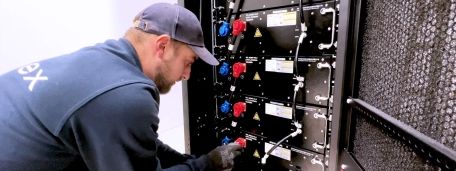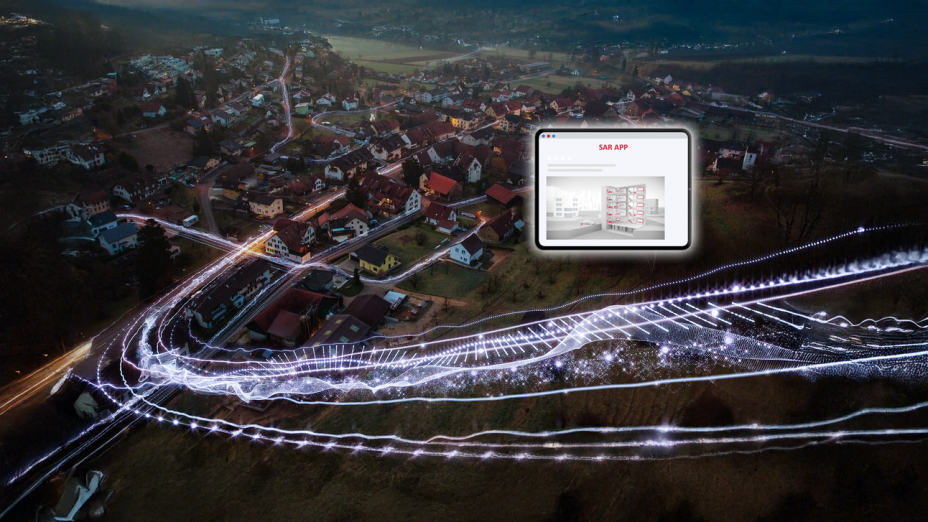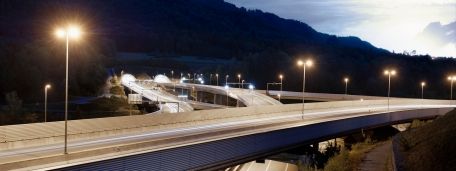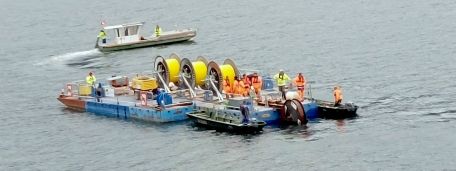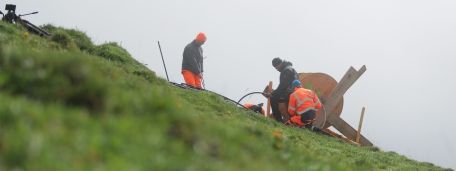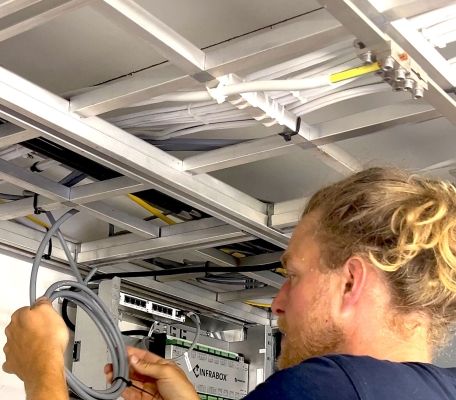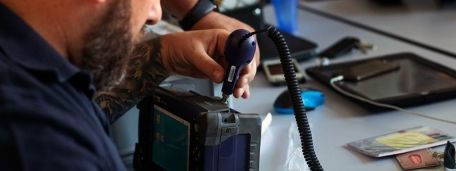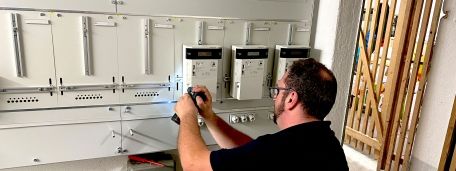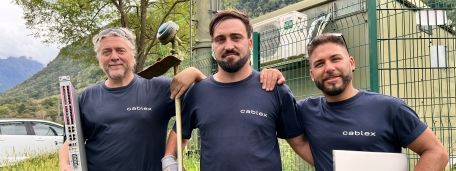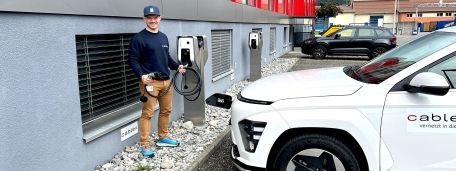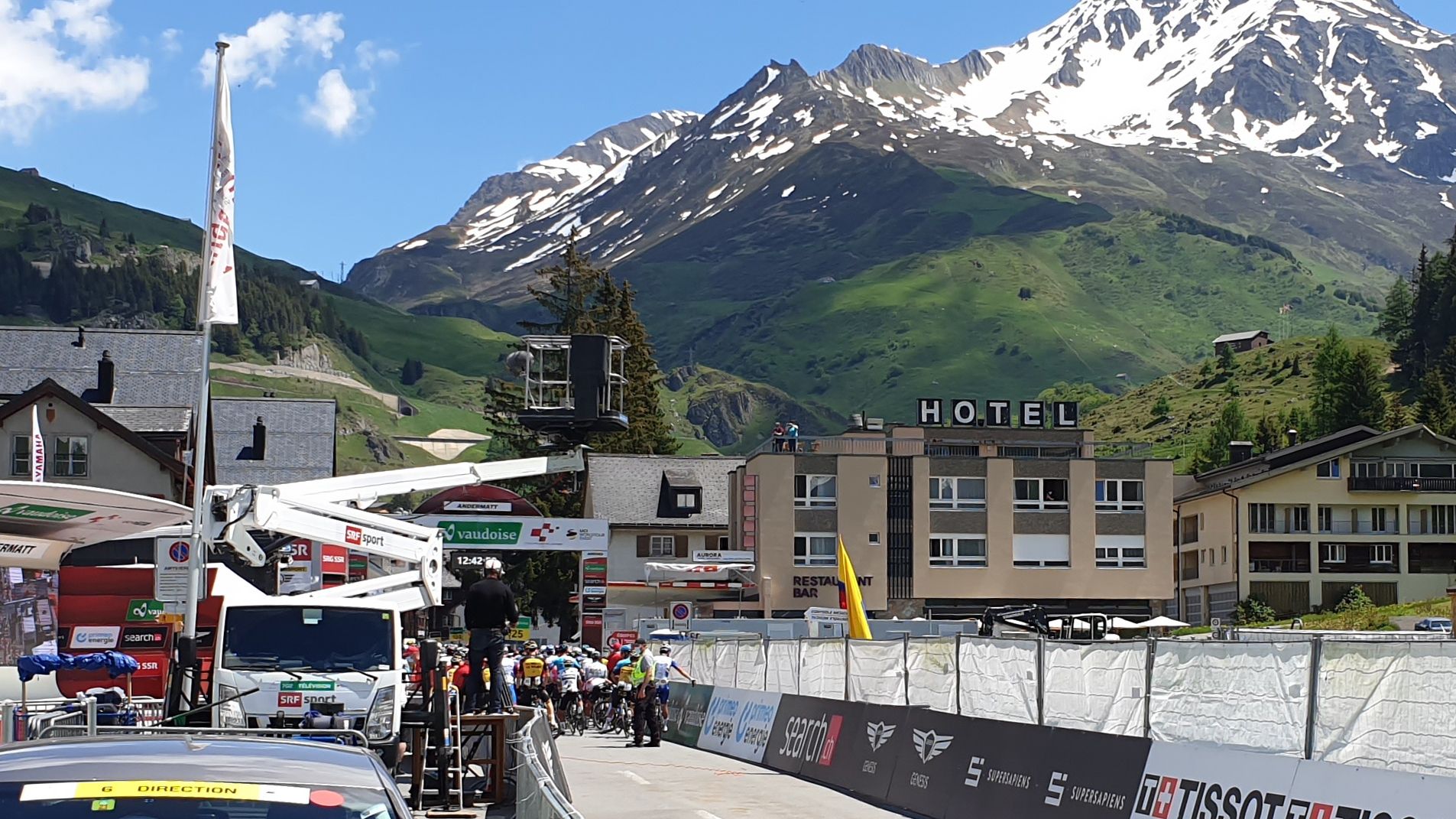
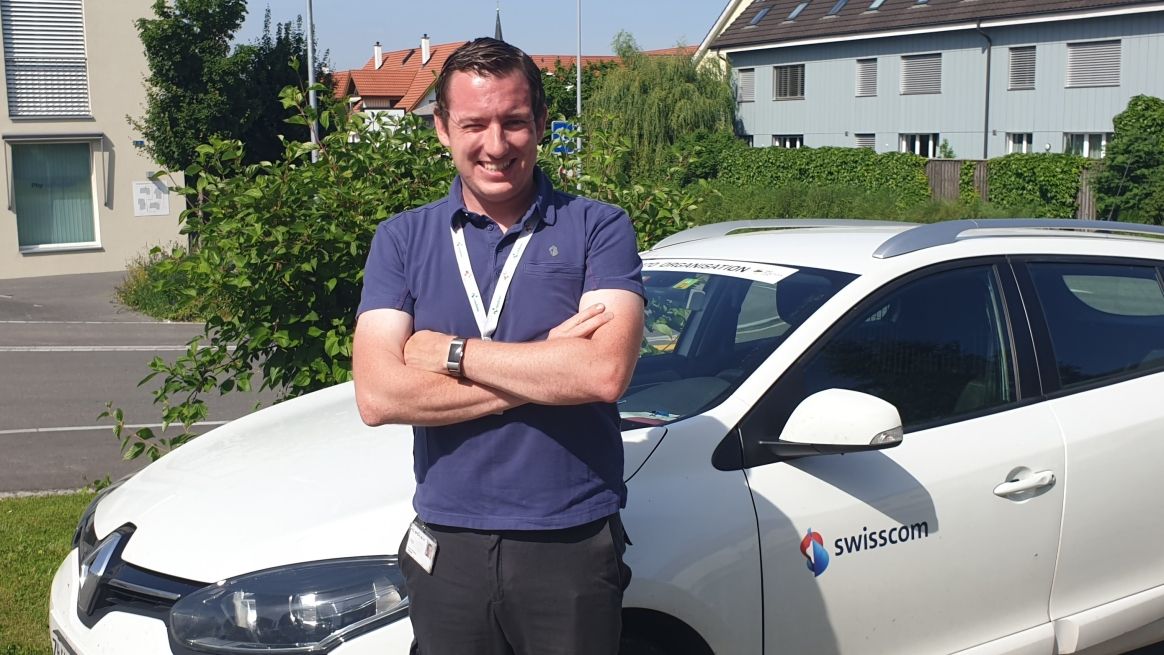
Nico Lienhard: "To be honest, I didn't take in that much from the cycle race itself. Of course, I did watch one or two cyclists approaching the finish line live on site, but my focus was on the stability of the internet lines.
And yes, this year's Tour de Suisse 2021 really did take place. Even if it was somewhat overshadowed by media reports of the Euros and the summit between heads of state Biden and Putin.
Nico Lienhard, service specialist at cablex, accompanied his colleague Daniel Kern from Swisscom throughout the Tour, which took place from 6 to 13 June 2021. Together they ensured that the internet lines for the SRF media centre worked seamlessly. A COVID-19 test every three days was their constant companion. The Tour de Suisse is the most important cycle race in Switzerland and covers more than 1300 kilometres through all areas of Switzerland over eight stages.
Very exciting, but challenging!
It was generally just our two technicians who covered the tour over the entire 13 days. They received support for the setup works for the individual stages from local colleagues.
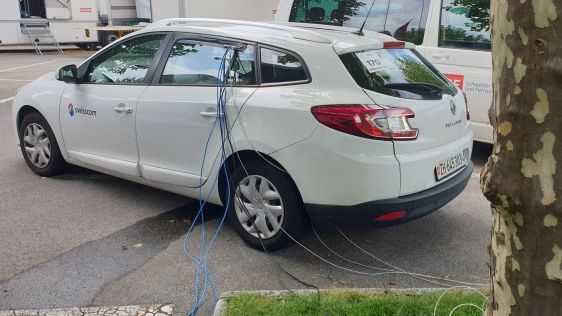
Nico Lienhard comments: "The setup always took place in two phases. In each case, a local FS agent from cablex or a local electrician was provided on site a couple of days before our arrival. They had the job of stretching the copper/optical fibre cables from the junction box to the planned locations and testing the lines.
On the day of production, the technicians from the first phase arrived back on site to help us. The aim was to get the commentators' and timekeeping vehicles online no later than 12:00. This was always the most tense moment which required our full attention.
As we always only arrived the night before the day of production, we had a very narrow lead time, so things naturally didn't always run completely smoothly. For example, there was the time when, all of a sudden, the transmission vehicles for SRF were positioned at a different location than previously planned. This meant we had to improvise! (The image above shows how we had to improvise, since not all routers fitted into one vehicle.The routers are connected using copper from Swisscom and the blue cables lead to the big SRF transmission vehicles.)
The constant change of location made the situation very exciting, but it was also challenging. Each day, we started setting up at 08:30 with the goal of finalising all installations by 12 noon. SRF was usually finished with the final transmission by around 6:30 p.m. Then it was a case of dismantling and driving to the next location."
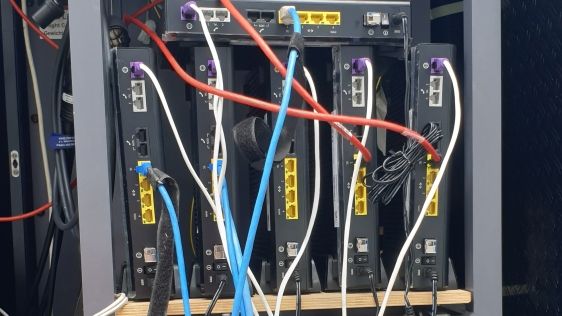
The technology on site:
- Access point for the Wi-Fi connection and LAN workstations for the journalists in the media centre as well as a few offices
- Wi-Fi with access point or LAN cable connections for the TV compound, the transmission, commentators and timekeeping vehicles
My personal highlight.
Nico Lienhard has already worked at many events for cablex, but always takes different highlights away from each event.
"To be honest, I didn't take in that much from the cycle race itself. Of course, I did watch one or two cyclists approaching the finish line live on site, but my focus was on the stability of the internet lines. I also found it very exciting watching SRF's production work. A huge effort goes into it so that good images reach the viewers. A technical highlight for me was seeing how the transmission of footage from the motorcyclists and helicopters reached the TV compound.
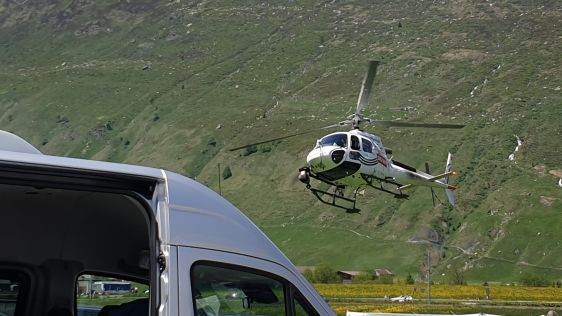
A plane circles overhead at 7000 metres altitude during the stage's race. The helicopter and motorcycles send their signal directly to the plane. From there, it's forwarded to the TV compound. In the TV compound, there's a 40-metre high articulated telescopic scaffolding tower with satellite dishes which continuously angle themselves towards the plane and receive the signal."
We would like to thank Nico Lienhard for his exciting report of his assignment at this year's Tour de Suisse – something that he doesn't do every day. I wonder where our dedicated and curious service technicians will be taken on their next assignment.


